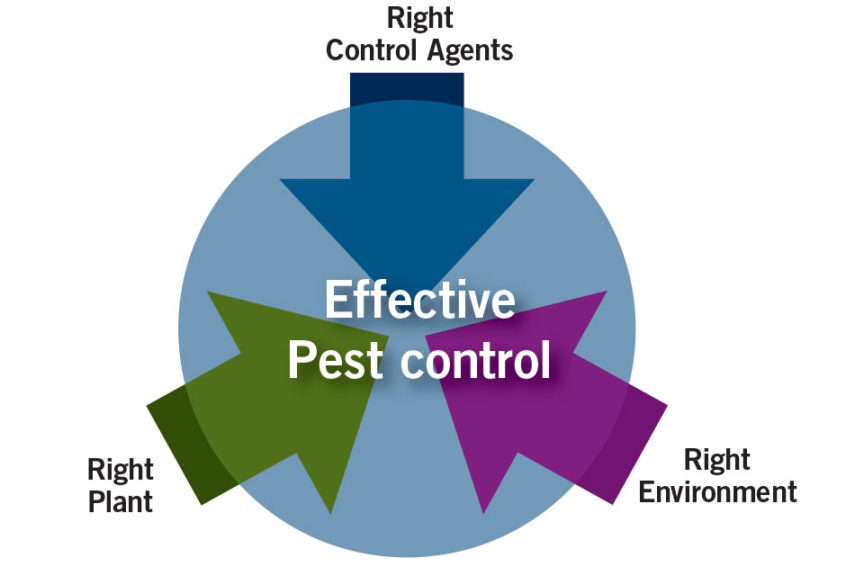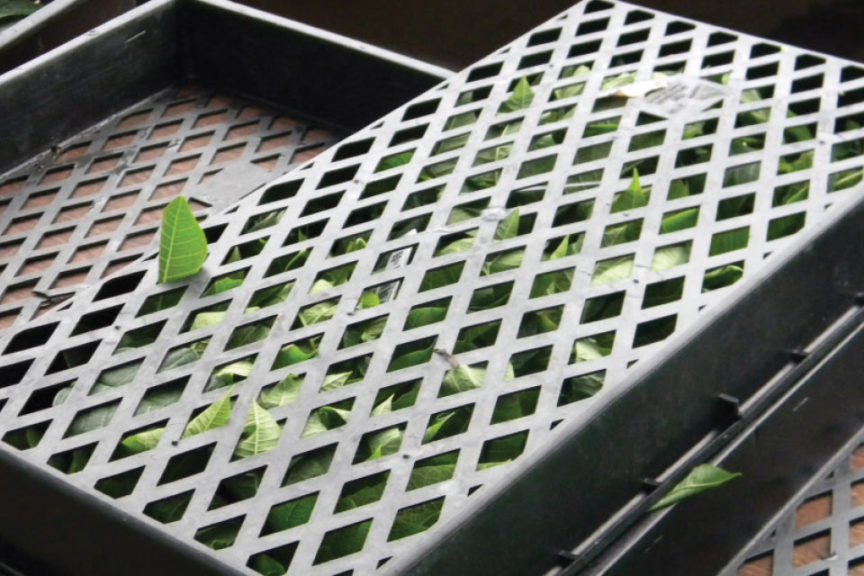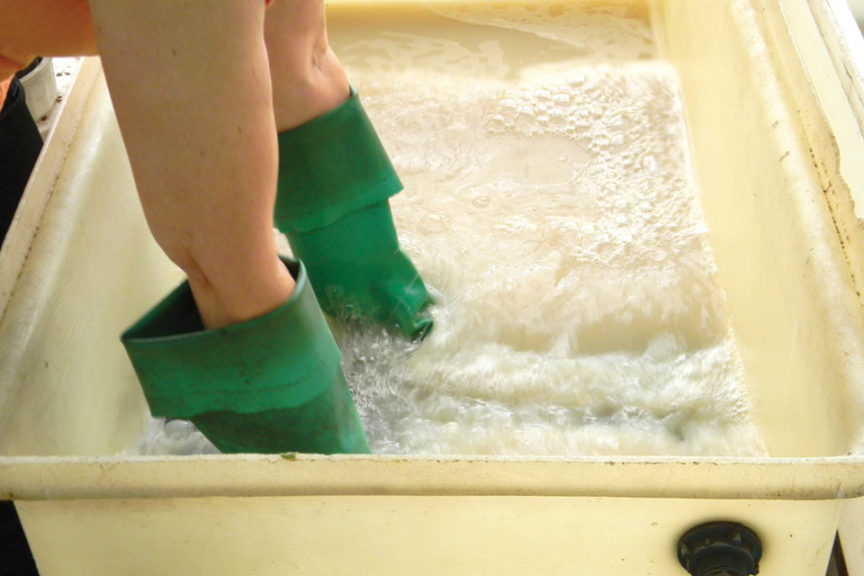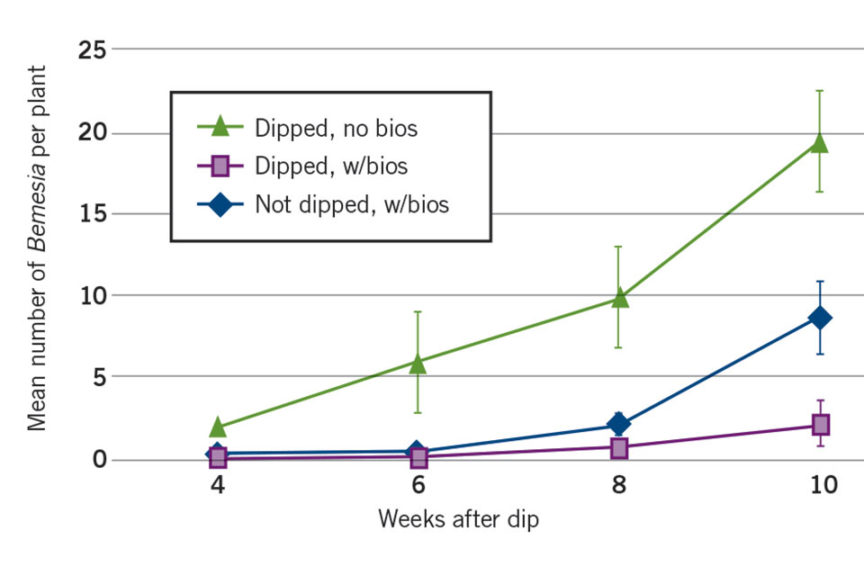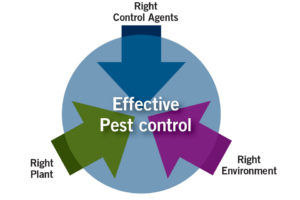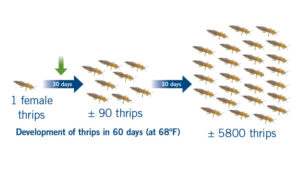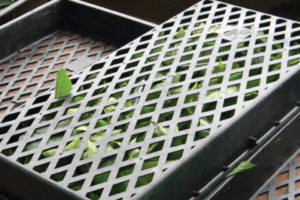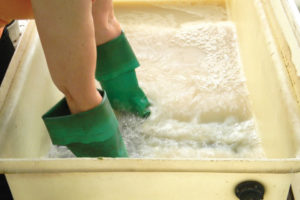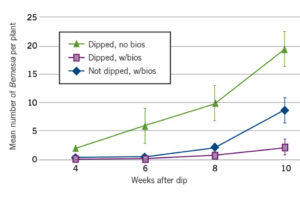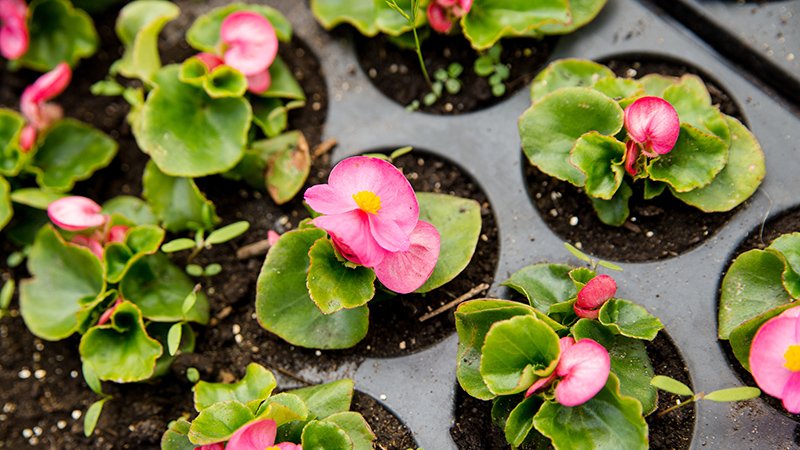Prevention and Early Intervention: The Keys to Biocontrol Success in Greenhouse Crops
Greenhouse Crops (floral and vegetable) are affected by multiple interactive variables that can affect crop development, pest and disease incidence and development, and performance of beneficial species. Major factors include: the type of crop and crop growth stage, production practices and inputs that change to suit the needs of the crop, and external environmental conditions (temperature, humidity, light). Even in a closed system, different pests (and diseases) can cause problems at different stages of crop development. Understanding the effects of these factors, their interactions, and knowing how to work with them is even more critical when implementing a biocontrol program.
A Preventative Approach to Biologicals Works Best
Effective use of biologicals requires a different approach and philosophy to that used for chemicals. At their core, biological control agents are best used to prevent pest problems from occurring, rather than reacting to them. Their use requires different assumptions and timing of actions. They rarely serve as stand-alone controls and need to be deployed within a system that supports their success, and where a range of components within that system function together to provide the desired level of suppression (Figure 1, see slideshow).
It is important to prevent insect and disease pressure from the very beginning of crop production. Good planning up front, for example, can minimize potentially bigger problems down the line. Understanding the relative susceptibility of different plant varieties to pests and diseases is important knowledge to have, either to guide selections (if there is flexibility to do this) or to use known susceptible cultivars to guide scouting and management interventions.
Equally important is the use of production practices that optimize nutrient and water use to grow healthy plants. For certain crops, there is a direct link between fertilizer rate and infestation by pests like thrips and aphids. Although most greenhouse crops are on high-fertilizer regimes, not all plant species need these high rates. Research suggests that in some crops, fertilizer can be reduced by 33% to 75% without affecting quality, but this can have a dramatic effect on susceptibility to pests and diseases. Similarly, plants that are over-watered or water-stressed are more vulnerable to pests. Use of best practices will help create a more resilient crop that is more productive and inherently less prone to pests and diseases, and biocontrol then becomes a component that functions much more efficiently within that system.
Start Clean and Stay Clean
It is equally important to ensure that the growing environment that young plants are brought into is clean and free from pests. Implementation of good sanitation practices after a crop cycle and prior to installation of new plants is just a good working practice. Preventing the entry of pests into the production area by installing screening over vents is another easy way to reduce pest risks.
A basic tenet of Integrated Pest Management (IPM) is to start clean, and stay clean. Once pest populations have reached a certain level, biologicals cannot catch up, and the only recourse is to apply pesticides, which in turn can totally disrupt a bioprogram.
Many crops are grown from propagative material; this may be produced in-house or in specialized facilities. Cuttings often carry low numbers of pests such as thrips or whitefly. That alone makes it difficult to actually find the insects. With thrips, the problem is made worse by the fact that they are cryptic insects, and eggs are laid in plant tissue. Given the reliance on pesticides at most propagation facilities, too, thrips and whiteflies that arrive are likely to have been exposed to a range of different chemistries, so the efficacy of many registered products may be compromised.
Back to assumptions and timing. In such crops, the assumption is that incoming cuttings will carry some pests, and biocontrols should be introduced immediately. In a way, this breaks with most methods used to guide pest management decisions, but by the time you see thrips and whiteflies in the crop (or on sticky cards), it is probably too late to achieve success with biologicals, owing to their high reproductive potential (Figure 2, see slideshow). Clearly, the earlier we can intervene, the more likely a bio-based IPM program is to be successful.
A strategy often used is to front load a biocontrol program. The goal is to mitigate problems early by overwhelming pests with an army of biologicals. During the early stages of a crop cycle, plants are small and grown pot tight. As a result, good crop coverage (e.g., with predatory mites like Neoseiulus cucumeris) can be achieved relatively easily and a comparatively small amount of product is needed to cover all the plants. Some biocontrol agents, like Dalotia (=Atheta), N. californicus, and soil predatory mites, will establish without the need for further introductions; others will have to be released on a regular basis throughout the production cycle.
Get a Clean Start With Dipped Cuttings
Another way to start clean is by dipping cuttings. This is an approach that works well for poinsettia cuttings, which may carry Bemisia whiteflies. The cuttings are immersed in low-risk (bio)pesticides such as insecticidal soap, horticultural oil, or BotaniGard (Figure 3, A and B, see slideshow). Immersion of batches of cuttings provides thorough coverage, is quick and effective, uses relatively little product, and is readily integrated into the work flow.
How can dipping help set you up for success? In trials completed at Vineland Research and Innovation Centre (Vineland Station, Ontario, Canada), we assessed the beneficial effects of dipping Bemisia-infested poinsettia cuttings on whitefly population development, and the compatibility of this approach with two commonly used biocontrol agents (Eretmocerus eremicus and Amblyseius swirskii) (Figure 3, C, see slideshow). The dip treatment used contained BotaniGard WP in 0.5% insecticidal soap.
The following results were obtained when three regimes were tested:
• Eretmocerus only (not dipped, with bios): There was a gradual increase in the number of whiteflies on the plants over 10 weeks
• Dip only (dipped, no bios): This treatment had a significant suppressive effect on the starting population, which was still apparent 10 weeks later
• Dip, followed by parasitoid release (dipped, w/bios): This treatment provided the best results, whereby the dip knocked down the initial whitefly infestation to a level that was kept in check thereafter by Eretmocerus. Similar results were obtained when A. swirskii was used in place of Eretmocerus.
There are other benefits to taking a biological approach against Bemisia — principles that are relevant to other pests, as well. In a study done at the University of Guelph, mixed biotype populations of Bemisia tabaci on poinsettia were monitored over time in commercial greenhouses. Under a chemical regime, Mediterranean (Q-biotype) populations persisted, whereas under a bio regime, it was displaced from the population by the B-biotype, which can still be managed using existing chemistry if needed. So bio-combinations not only provide superior levels of control, but can help overcome pesticide resistance.
What about the risks associated with this approach? Phytotoxicity is an obvious consideration. We found that dipping poinsettia cuttings in oils and soaps prepared at the recommended spray rates caused damage to the leaves; the severity of damage was correlated to the concentration used, and there were also differences in cultivar sensitivity. Rates have to be adjusted accordingly. We also considered risks of disease transfer, specifically Pectobacterium carotovora (Erwinia). Based on results from our trials, the level of risk appeared to be very low, but it is a good practice to change the dip suspension periodically to prevent the potential build-up of inoculum to infectious levels.
The effectiveness of the clean-start approach in poinsettia may be transferred to other propagative crops such as chrysanthemums, mini roses, ivy, and vegetative annuals and perennials, etc. While it is unlikely to be a one-size-fits-all method, it can be a useful tool for early management of other important pests found on cuttings such as western flower thrips and two spotted spider mites, and will enhance all subsequent biocontrol practices.
Prevention Starts With Awareness
Prevention and early intervention strategies are key components in IPM, and are especially important when biological control forms the basis of a pest management program. This starts with awareness of potential threats, using your experience to be on the lookout for incoming pests, and putting processes in place to facilitate early detection and/or early action to mitigate. Activities will then be supported by the use of cultural practices to minimize pest build-up wherever possible. Pest outbreaks may still occur, but if you start out right and build resilience into the production system, pest pressures will be reduced and you will set yourself up for success.
The author would like to thank the researchers and technical staff who participated in the projects: Dr. Rose Buitenhuis, Graeme Murphy, Taro Saito, Ashley Summerfield, Mark Jandricic, Angela Brommit, Paul Côté, Anna Krzywdzinski, Rebecca Eerkes, and Erfan Vafaie. This research was funded in part through the Canadian Agricultural Adaptation Program (project number CAAP 0473 “Preventative solutions for whitefly on seasonal poinsettia cuttings,” administered by the Agricultural Adaptation Council). Additional support was provided by Flowers Canada (Ontario) Inc. (Guelph, ON, Canada) and Growing Forward 2, Canada’s federal-provincial-territorial agricultural funding framework.



